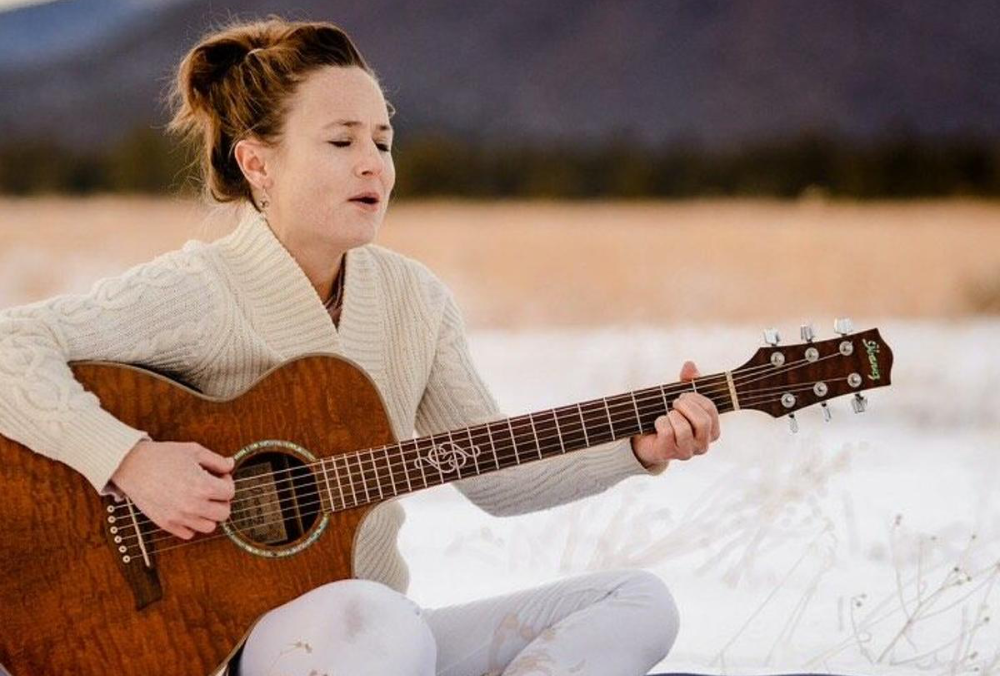WARNING: The following contains spoilers for Those Snow White Notes Episodes 1 & 2, now streaming on Crunchyroll.
From Your Lie in April to Nodame Cantabile, there have been some brilliant anime about Western classical music. However, anime about traditional Japanese music -- such as 2019’s Sounds of Life, a series highlighting Japanese zither (or koto) -- have received comparatively less attention.
Part of the spring 2021 anime lineup, Those Snow White Notes is a new series that brings attention to the traditional Japanese instrument, shamisen, and so far, it’s done an excellent job at showcasing this special music maker's charm.
Those Snow White Notes protagonist Setsu Sawamura was brought up by his grandfather, the shamisen master Matsugoro Sawamura. After Matsugoro -- from whom Setsu learned everything he knows -- passes away, Setsu loses his way and decides to leave his hometown and move to Tokyo. Since he is only 16, his mother forces him to attend high school, where his journey of self-discovery starts.
Those Snow White Notes and Sounds of Life have quite a bit in common. Both series' protagonists are inspired by their deceased grandfather, and both find companionship through their high school music club. But the two are also decidedly different -- Setsu is a shamisen prodigy while Sounds of Life protagonist Chika Kudo is a complete novice. Sounds of Life centers on the competition aspect of its high school koto club, giving it a sports anime vibe. Those Snow White Notes is more focused on Setsu's character.
One thing Those Snow White Notes does much better is its usage of music throughout the series. Sounds of Life does not present a complete koto song until the middle of Episode 2 when the expert Atsumi Tanezaki plays, and even then the music is constantly interrupted by characters’ inner thoughts. Alternatively, Those Snow White Notes includes two long shamisen sequences in each of its first two episodes. While there are monologues as well, it’s much less intrusive and the music is allowed to be properly presented.
The anime's opening and ending themes also incorporate shamisen. The ending song in particular uses shamisen to back up its rap verses, highlighting the instrument's versatility. Shamisen is presented so well because the famous duo Yoshida Brothers supervise the series’ music. They also co-wrote and played shamisen for Those Snow White Notes' ending theme. The duo specialize in “Tsugaru-jamisen,” the same style of shamisen that Setsu plays in the anime. The care that goes into the music shines throughout the show's musical sequences and are truly breathtaking to listen to -- both for the characters and the viewers.
The shamisen music presented in Those Snow White Notes matches the plot and character development. Episode 1 features two solos by Setsu that clearly communicate his inner struggles. His first solo is the first time he's played since his grandfather passed away. Matsugoro told Setsu to stop playing after he dies, so he's been holding back his passion, and the music conveys his eagerness to finally play again.
Setsu’s second solo is in front of an audience. This is when he starts to understand his grandfather and regains the joy of playing. The music, known as “Jongara-Bushi,” is a dynamic and captivating improvisation song from Tsugaru-jamisen and will be important to future plots. It's a great presentation of what the song can sound like, making it a model for later performances.
Those Snow White Notes Episode 2 is bookended by two equally mesmerizing collaborations. The first song features Setsu’s mother Umeko’s vocals. The performance is so passionate that it breaks the string on Setsu’s shamisen, a showcase of Umeko’s fiery personality. The second song is a duet with Setsu’s brother Wakana. While they play in unison, the music clearly shows the difference in their sound. Wakana’s shamisen sounds slightly brighter and less aggressive than Setsu's, but they are always in sync. It’s perfectly allegorical for the kind of warm and accepting relationship the brothers have.
The art and animation, combining modern aesthetics with some traditional, slightly muted coloring, complement the anime's music nicely. With that music helping to bring the characters to life, Those Snow White Notes has the potential to elevate its source material to the next level.
About The Author

